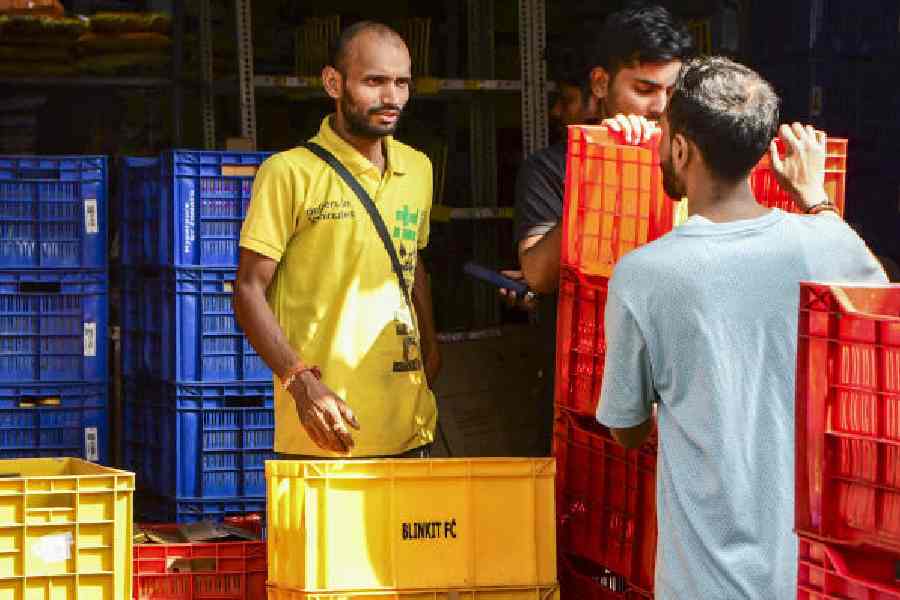It is a well-documented fact that Bengalis realized that imitation is the best form of flattery when the British had consolidated their rule in India. Various writers and artists, from Rajnarayan Basu in his Sekal ar Ekal (1874) to Gaganendranath Tagore in his satirical drawings have taken a critical view of this unenviable trait in the character of the Bengali. While Rajanikanta Sen sang the praises of “mayer dewa mota kapod...” — accepting with gratitude the coarse cloth gifted by the motherland — Anglicized Bengalis in their three-piece suits waltzed with their saried and high-heeled partners in exclusive clubs, cutting absurd figures with their over-nourished bodies.
Now that we are still in the throes of globalization, the same scenario, albeit with variations in keeping with the age and times, is revisiting us. Ideologically, Bengalis of a certain age — if only a section of them — may have felt more at home in the USSR and even China, but perhaps they nursed a secret desire to be reborn in America.
So, when we all became part of the global village, sartorially, the most noticeable change was our adaptation of denim jeans as our national uniform. The young and the not-so-young alike wear jeans, be it in the backwaters, swanky nightclubs, villages or remote districts. To complete the all-American look, Bengalis soon discarded their favourite jholas and those obnoxious briefcases or attachés in favour of trendy backpacks that also go by the names of rucksack, knapsack or haversack. To facilitate willing suspension of disbelief, they seem to have bid adieu to their looking glasses too. They are not willing to take ruthless stock of the image they create.
To be honest, this is not restricted to Bengal, for it is an all-India disaster. And, of course, if Indians realized what’s good for them and acted on the belief, the sable jackets and cloaks that those in the legal profession in our country are still obligated to wear, even on the hottest of summer days, would have long passed into obsolescence. Even more than 70 years after Independence, we have not been able to shake off this vestige of colonialism.
Deadly crush
Leave alone other finer sensibilities, we seem to lack a sense of occasion: what to wear or carry where and when. We do not seem to accept that however much we may fool ourselves, most of our cities lack the basic amenities that are taken for granted in many better-off nations in south and southeast Asia. Add to that the monstrous and unchecked growth of the Indian population. It inevitably leads to the deadly crush of human bodies on roads, pavements, markets and public transport that most people hazard on a daily basis. But instead of carrying bags that occupy minimal space, the current craze is to be seen with a giant backpack on your back. This worsens the space crunch in already overcrowded buses and Metro rail coaches. You buy a ticket for a single head and occupy double the space.
If you are standing inside public transport, you are bound to get sandwiched between human bodies and these protruding pieces of baggage. If you allow an extra passenger to be squeezed in on your seat, and you are hunching forward, your mug stands a good chance of being squished by another commuter’s burden. You may wonder what they carry inside. We know that children are weighed down by books. But what about adults? Do they carry an entire month’s provisions? Their laundry? Several laptops, in case most of them conk out simultaneously? Or do they think that Tagore meant it literally when he sang, “kothao amar hariye jawar nei mana...” (I can lose myself wherever I desire)?
Nobody protests. But if we can cope with falling bridges or burning hospitals, a bloated bag or a nose out of joint hardly matters.











